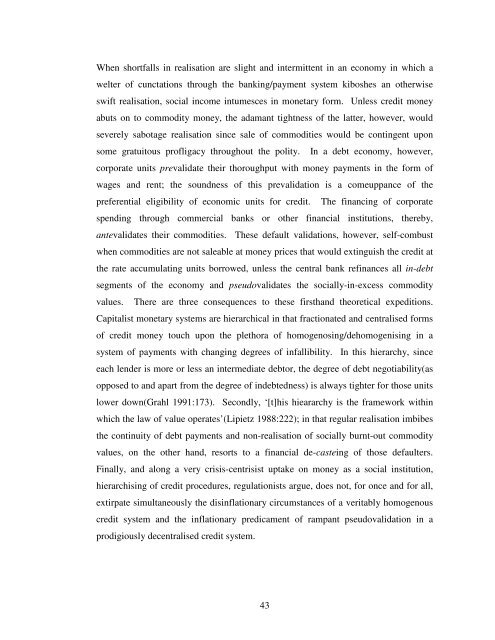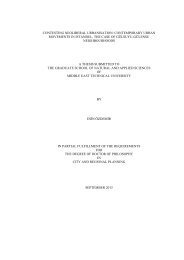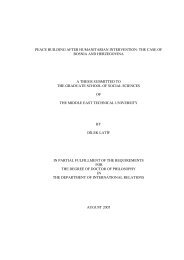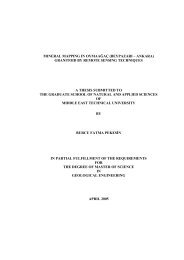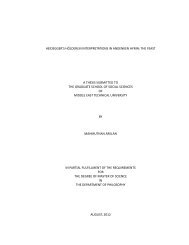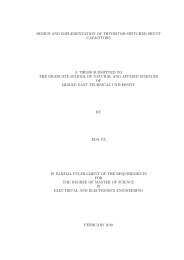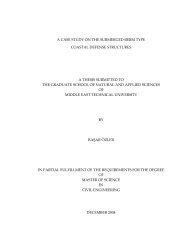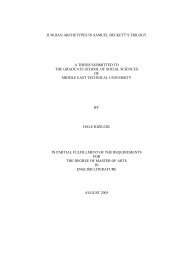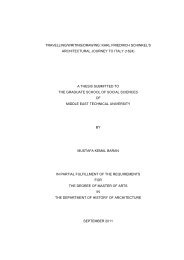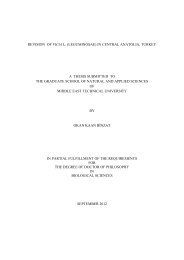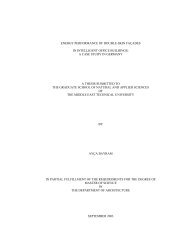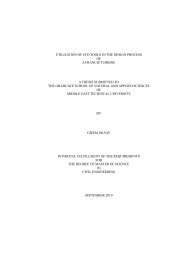View Original - Middle East Technical University
View Original - Middle East Technical University
View Original - Middle East Technical University
You also want an ePaper? Increase the reach of your titles
YUMPU automatically turns print PDFs into web optimized ePapers that Google loves.
When shortfalls in realisation are slight and intermittent in an economy in which a<br />
welter of cunctations through the banking/payment system kiboshes an otherwise<br />
swift realisation, social income intumesces in monetary form. Unless credit money<br />
abuts on to commodity money, the adamant tightness of the latter, however, would<br />
severely sabotage realisation since sale of commodities would be contingent upon<br />
some gratuitous profligacy throughout the polity. In a debt economy, however,<br />
corporate units prevalidate their thoroughput with money payments in the form of<br />
wages and rent; the soundness of this prevalidation is a comeuppance of the<br />
preferential eligibility of economic units for credit. The financing of corporate<br />
spending through commercial banks or other financial institutions, thereby,<br />
antevalidates their commodities. These default validations, however, self-combust<br />
when commodities are not saleable at money prices that would extinguish the credit at<br />
the rate accumulating units borrowed, unless the central bank refinances all in-debt<br />
segments of the economy and pseudovalidates the socially-in-excess commodity<br />
values. There are three consequences to these firsthand theoretical expeditions.<br />
Capitalist monetary systems are hierarchical in that fractionated and centralised forms<br />
of credit money touch upon the plethora of homogenosing/dehomogenising in a<br />
system of payments with changing degrees of infallibility. In this hierarchy, since<br />
each lender is more or less an intermediate debtor, the degree of debt negotiability(as<br />
opposed to and apart from the degree of indebtedness) is always tighter for those units<br />
lower down(Grahl 1991:173). Secondly, ‘[t]his hieararchy is the framework within<br />
which the law of value operates’(Lipietz 1988:222); in that regular realisation imbibes<br />
the continuity of debt payments and non-realisation of socially burnt-out commodity<br />
values, on the other hand, resorts to a financial de-casteing of those defaulters.<br />
Finally, and along a very crisis-centrisist uptake on money as a social institution,<br />
hierarchising of credit procedures, regulationists argue, does not, for once and for all,<br />
extirpate simultaneously the disinflationary circumstances of a veritably homogenous<br />
credit system and the inflationary predicament of rampant pseudovalidation in a<br />
prodigiously decentralised credit system.<br />
43


